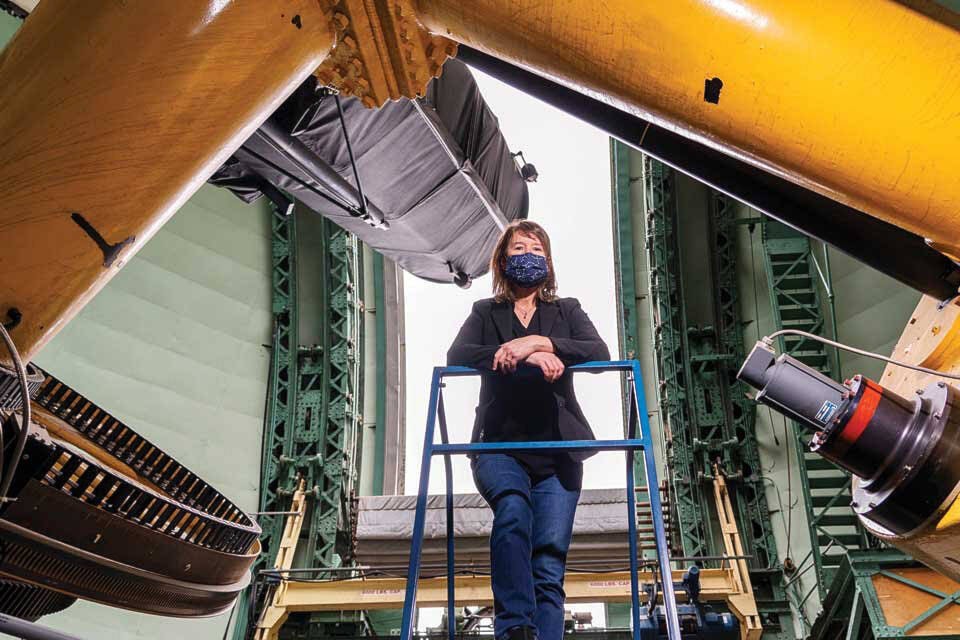Researchers at the University of Victoria are among the first in history to find traces of the first stars in the universe.
Kim Venn, UVic astronomer and director of the Astronomy Research Centre, co-led an international team that found evidence of these post-Big Bang stars in a cluster with the lowest concentration of metals ever observed.
Using the European Space Agency’s satellite mission Gaia, Venn’s team examined a cluster called C19 in the outer reaches of the Milky Way galaxy. The extremely metal-poor stars appeared to share an orbit in the galactic halo. After studying them using spectroscopy – the study of how matter absorbs and emits light – they determined they’d found what are believed to be traces of first stars.
“What an amazing thing, isn’t it? Stars that we will never be able to go and touch, that we’ll never be able to send a robot to grab a piece of that atmosphere, and yet we can still figure out their composition from these rainbows, from these spectra,” Venn said in an interview on uvic.ca.
Her team is already investigating another stellar cluster and is working on installing a new high-resolution spectrograph in Gemini South observatory in Chile. That’ll allow the team to search for similar stellar streams from the Southern Hemisphere.
New projects will come out of this discovery, like one in which UVic cosmologist Julio Navarro is participating. He has started working with an international team on a project to model the origins of C19 and determine what it could mean for how we understand dark matter.
“In astronomy, we often say when it comes to objects there’s zero, one, or many,” Venn said. “So far all we’ve done is gone from zero to one. Now that we know what to look for and how to find them, we want to find more.”
ALSO READ:
ALSO READ:
Do you have a story tip? Email: vnc.editorial@blackpress.ca.
Follow us on and and like us on



